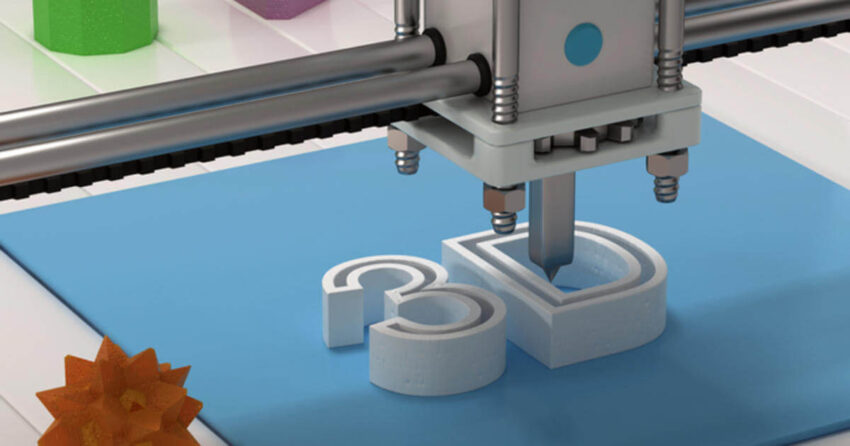
Last updated on July 17th, 2023 at 09:42 am
Introduction
In recent years, 3D printing fabrication has emerged as a groundbreaking technology, revolutionizing the way we manufacture products. Also known as additive CAC. Works manufacturing, this innovative process allows the creation of three-dimensional objects through the layer-by-layer deposition of materials. From rapid prototyping to customized production, 3D printing fabrication offers a wide range of applications across various industries. This article explores the fundamentals, benefits, and future prospects of 3D printing fabrication.
1. The Origins of 3D Printing
The roots of 3D printing can be traced back to the 1980s when the first additive manufacturing technologies were developed. Initially, 3D printing was primarily used for rapid prototyping in industries such as aerospace and automotive. Over time, advancements in technology and materials expanded its applications to include various sectors, from healthcare to consumer goods.
2. How 3D Printing Works
At its core, 3D printing involves the layer-by-layer construction of objects based on a digital design. The process begins with the creation of a 3D model using computer-aided design (CAD) software. The model is then sliced into thin cross-sectional layers, which serve as a blueprint for the 3D printer.
Using a variety of additive manufacturing techniques, the 3D printer deposits material layer by layer, following the specifications outlined in the model. This can be done using polymers, metals, ceramics, or even biological materials, depending on the desired application. The layering process continues until the entire object is formed, resulting in a precise and intricate three-dimensional structure.
3. Materials Used in 3D Printing
3D printing fabrication employs a diverse range of materials, each with its own unique properties and applications. Common materials include thermoplastics, such as ABS and PLA, which are widely used for prototyping and consumer goods. Metals like titanium and aluminum find applications in industries requiring high-strength components, such as aerospace and engineering. Additionally, advanced materials like biocompatible polymers enable the production of medical implants and prosthetics, showcasing the versatility of 3D printing.
4. Applications of 3D Printing Fabrication
The applications of 3D printing fabrication are extensive and continue to expand across various sectors. In healthcare, it has revolutionized the production of patient-specific medical devices, including prosthetics, dental implants, and surgical instruments. The automotive industry utilizes 3D printing for rapid prototyping, customized components, and even the manufacturing of entire vehicles. Architects and designers leverage this technology to create intricate models and prototypes, facilitating better visualization and design iterations.
5. Advantages of 3D Printing
CAC.Works 3D printing fabrication offers numerous advantages over traditional manufacturing methods. Firstly, it enables unparalleled design freedom, allowing the production of highly complex and customized geometries that would be challenging or impossible with conventional techniques. This flexibility translates into reduced costs for prototyping and low-volume production. Additionally, 3D printing minimizes material waste and environmental impact, as it only uses the necessary amount of material for each object.
6. Challenges and Limitations
While 3D printing presents numerous opportunities, it also faces certain challenges and limitations. One limitation is the speed of production, as building objects layer by layer can be time-consuming for larger and more intricate designs. Moreover, the quality and consistency of 3D-printed parts can vary depending on the printing technology and materials used. Post-processing and finishing techniques may be required to achieve the desired surface finish and mechanical properties.
7. The Future of 3D Printing
As technology advances, the future of 3D printing fabrication looks promising. Innovations in materials and printing techniques will continue to expand the range of applications and improve the quality of printed objects. The integration of 3D printing with other advanced technologies, such as artificial intelligence and robotics, will further enhance its capabilities. With ongoing research and development, we can anticipate the widespread adoption of 3D printing in various industries, leading to more efficient and sustainable manufacturing processes.
Conclusion
3D printing fabrication has revolutionized the manufacturing landscape by offering versatile and efficient production methods. From healthcare to automotive, this technology has found its place in various industries, enabling rapid prototyping, customization, and cost-effective production. As we move forward, continued advancements in 3D printing will unlock new possibilities, transforming the way we design, create, and manufacture objects.
FAQs
- Q: Is 3D printing fabrication limited to small-scale production?
A: No, 3D printing can be used for both small-scale and large-scale production depending on the requirements and printing capabilities. - Q: Can 3D printing be used to create functional end-use parts?
A: Yes, with the right materials and printing techniques, 3D printing can produce functional end-use parts with sufficient strength and durability. - Q: Are there any cost advantages to using 3D printing?
A: 3D printing can offer cost advantages for low-volume production, as it eliminates the need for expensive molds and tooling. - Q: What are the limitations of 3D printing in terms of materials?
A: While 3D printing has a wide range of compatible materials, certain materials with specific properties may still be challenging to print accurately. - Q: Can 3D printing be used for biological applications?
A: Yes, 3D printing has been utilized in the field of bioprinting to create tissues, organs, and other biological structures for research and medical purposes.
Tech World Times (TWT), a global collective focusing on the latest tech news and trends in blockchain, Fintech, Development & Testing, AI and Startups. If you are looking for the guest post then contact at techworldtimes@gmail.com

